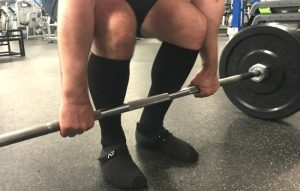What is Powerlifting?
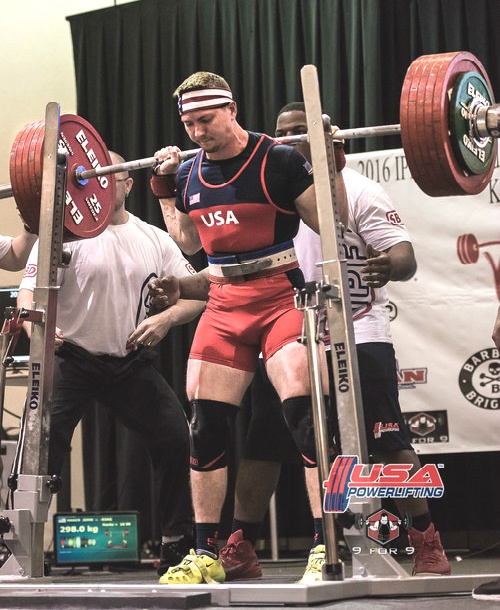 At its core, it is a strength sport focused on maximizing absolute top-level strength in the three competition lifts:
At its core, it is a strength sport focused on maximizing absolute top-level strength in the three competition lifts:
- squat
- bench press
- deadlift
During competition, each lifter is allowed three attempts (or more in some rare cases) to put up the largest number they can. At the conclusion of competition, placings are determined by total weight, or the sum of the three lifts.
The sport is split between equipped and un-equipped (raw) lifting, and raw classic lifting.
- Equipped competitions allow for the use of highly-supportive bench shirts, squat and deadlift suits, and knee wraps; weight belts and wrist wraps are also permitted.
- Raw (un-equipped) lifting allows only for belts, wrist wraps, and knee sleeves—a much less supportive version of wraps.
- Raw classic lifting is the same as un-equipped, except knee wraps are allowed which makes it a middle ground between the two above.
Competitions are held all over the world, with the International Powerlifting Federation catering to countries from North and South America, Africa, Asia, Europe and beyond.
With that said, events are held mostly in North America, Europe, and Australia.
History of the Sport
The sport has an interesting history to say the very least. Long ago, it actually began as a sport called “odd lifts.” It was much more oriented towards strongman-style competitions with a large number of events. Over time, however, this narrowed down to the three competition lifts we now have today.
But the origins of strength training go back as far as the Greco-Roman times. Hippocrates was perhaps the first to refer to the phenomenon of training, commenting “that which is used develops, and that which is not used wastes away.” Another Greek, Aelius Galen mentions exercising with the halters—an early version of the dumbbells we use today.
Enter modern times: strength sports exploded in the United States and the United Kingdom in the 1950s, with several federations hosting ‘odd lifts’ events.
The very first actual meet, however, was held in York, Pennsylvania on September of 1964 at the York Barbell gym: The Weightlifting Tournament of America. It was a national event and the first of many for the USA. Funny enough, Bob Hoffman—the owner of the York Barbell Company—was actually an opponent of the up-and-coming sport. He had no idea of the chain of events he set in motion that day.
As that was happening, federations and organizations in the UK were beginning to form.
But Olympic weightlifting was still the dominant sport on the world stage, and the leading body—the British Amateur Weightlifting Association (BAWLA)—was not interested in allowing the new lifts to enter the record books. Because of this, several frustrated lifters in the United States formed the Society of Amateur Weightlifters to cater to the new lifts specifically.
At the time, there were a total of 42 lifting events, but the “strength set” consisted of only three: the bicep curl, bench press, and squat. Things changed shortly in 1966 when the Society of Amateur Powerlifters rejoined with BAWLA and curls were dropped for the deadlifts in order to standardize things across both organizations.
Britain followed closely behind the US, holding their first national event in 1966. Over the course of the next decade, friendly international bouts were hosted.
During this entire time of growth, Hoffman stayed busy. Faced with competition from Joe Weider on the rise in American strength circles, Hoffman started a magazine devoted to bodybuilding and odd lifts. It’s still around today: Muscular Development.
Gaining steam from his magazine, Hoffman became bigger and bigger in his influence within the world of strength. Every year in the beginning of November the York Barbell gym would host a large contest in celebration of Hoffman’s birthday.
But in 1971 things really took off and it was agreed that the very first World Weightlifting Championship would be held. Though previously only comprised of Americans, it was opened up to everyone—nobody from outside of the states showed up, however.
It was primitive. There were no flights; the weakest lifter started and pounds were added to the bar until the strongest lifter was done. There was no rule book and as such many arguments developed over the acceptable use of equipment. Weight classes were limited.
That doesn’t mean the lifters were weak though. Some very impressive numbers were put up, especially when you consider that lifting gear was much more primitive and provided less help.
- With no bench shirt, super heavyweight Jim Williams bench pressed 660 pounds and narrowly missed locking out 680
- Larry Pacifico bench pressed 515 pounds at a bodyweight of 198 pounds
- John Kuc put up a huge 820 pounds on deadlift
- Super heavyweight lifters Hugh Cassidy and Jim Williams tied for the win at 2,160 pounds but it was given to Cassidy for weighing slightly less
The next year in 1972 a second world event was held by the Amateur Athletic Union. Only 47 of the total 67 present were American this time around. It was really the first true world event as this time lifters from other countries showed up.
- 8 from UK
- 6 Canadians
- 2 Puerto Ricans
- 3 Zambians
- 1 West Indian
Right after that content, the International Powerlifting Federation was born—and that takes us all the way to wear we are today.
Competition Rules
While some minute rules will vary depending on the federation, such as if the heels must be touching during bench press or if a monolift can be used, the general basis remains the same.
- Squat: while descending the top of the lifters patella must break an imaginary line leading to the hip crease—and then stand up while the feet remain stationary
- Bench Press: while the back and glutes are fully touching the bench (and heels in the most popular and globally-recognized feds), the bar must be lowered and paused on the chest—and then pressed and locked out
- Deadlift: the knees, hips, and shoulders must be locked into place and alignment—the bar must be returned to the ground in a controlled manner
For all three, lifters are allowed a total of 60 seconds per attempt and must follow the commands given. This usually causes issues for beginners who aren’t used to listening and following commands given by the judges. If you plan to get started and compete, make sure to practice these ahead of time.
For all lifts, the timer starts once the “bar is loaded” call is given.
- Squat: the lifter must un-rack the bar and stabilize their feet and stop moving. Then the “squat” command is given—the lifter completes the lift. Then the “rack” command is given and the bar it returned to the support.
- Bench Press: after receiving a lift off and stabilizing the bar to zero movement, the “start” command is given. The bar is lowered to the chest and the lifter pauses until the “press” call is given. The bar is then pressed and locked out and held there until the “rack” call is given and it is returned to the support.
- Deadlift: the bar is lifted and locked out until the “down” call is given—the lifter then returns the weight to the ground without letting go of the bar.
A light system is used and three judges sit at either side of the lifter as well as in the front. After the lift is performed, they will make the call and give either a white or red light, depending on if it was a good or bad lift respectively.
Powerlifting Federations
There are countless different organizations but the main ones in the U.S. are the USAPL, USPA, and IPF.
With that said, they definitely aren’t the only options out there—and the popularity of the alternatives seems to grow every year as drama and other issues cause people to leave and seek other leagues.

Around the Globe
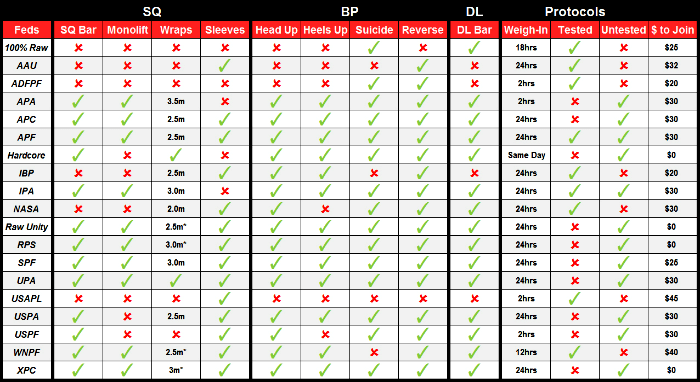
U.S. Based Feds
Raw Federations
100% Raw Powerlifting, RPS Powerlifting, and other smaller groups may be on the ride, but the USAPL and IPF currently boast the largest membership numbers. While equipped lifting is still their huge focus, their raw division is a widely-popular hub for raw lifters in America. If you are just getting started, one of these is a good place to begin your research.
Weight Classes
If you weren’t aware already, it is a weight class sport to keep things exciting and balanced. This means lifters are placed into divisions depending on what the scale says at weigh-in. Some groups such as the IPF have a 2-hour weigh-in right before the meet, while others like the USPA allow a 24-hour weigh-in.
Obviously, these are radically different; having an additional 22 hours to eat and put back on weight before the competition means competitors step onto the platform at a much higher “effective” weight.
When it comes to powerlifting weight classes, there are two groups: IPF and everyone else. Additionally, the numbers are slightly different for males and females.
The number listed is what the scale must say (or below) on game day.
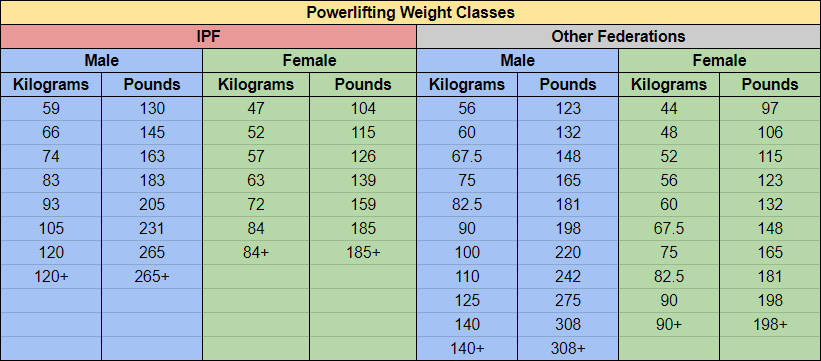
IPF and USAPL
Male:
- 59kg (130lbs)
- 66kg (145lbs)
- 74kg (163lbs)
- 83kg (183lbs)
- 93kg (205lbs)
- 105kg (231lbs)
- 120kg (265lbs)
- 120kg+ (265lbs+)
Female:
- 47kg (104lbs)
- 52kg (115lbs)
- 57kg (126lbs)
- 63kg (139lbs)
- 72kg (159lbs)
- 84kg (185lbs)
- 84kg+ (185lbs+)
Other Federations: USPA and More
Male:
- 56kg (123lbs)
- 60kg (132lbs)
- 5kg (148lbs)
- 75kg (165lbs)
- 5kg (181lbs)
- 90kg (198lbs)
- 100kg (220lbs)
- 110kg (242lbs)
- 125kg (275lbs)
- 140kg (308lbs)
- 140kg+ (308lbs+)
Female:
- 44kg (97lbs)
- 48kg (106lbs)
- 52kg (115lbs)
- 56kg (123lbs)
- 60kg (132lbs)
- 5kg (148lbs)
- 75kg (165lbs)
- 5kg (181lbs)
- 90kg (198lbs)
- 90kg+ (198lbs+)
Age Groups
Just like with weight classes, the sport is divided up by age. While the IPF has a different standard than their counterparts, other federations don’t all agree on the same classifications. With that said, there are averages:
- 15-18: Sub-Junior
- 19-23: Junior
- All ages: Open
- 40+: Masters
- 70+: Grandmasters
Some organizations break down the master class further into 5-year increments or include sub-master classes to provide those in their late 30s a different arena of competition than the fierce open class.
IPF Age Groups
If competing in the IPF or its affiliates, however, the details change slightly. Furthermore, it is based on an individual’s birth year. For example, someone who turns 23 in March will still be able to compete as a Junior until January first of the next year.
- 18 or younger: Sub-Junior
- 19-23: Junior
- 24-39: Open
- 40-49: Masters 1
- 50-59: Masters 2
- 60-65: Masters 3
- 65-70: Masters 4
- 70+: Grandmasters
Equipment and Gear
Powerlifting equipment is a big part of the sport. Whether you are competing in raw or equipped lifting, there are several items that are non-negotiable for anyone serious about progressing in the sport.
If you are just getting started, don’t worry about acquiring everything on the list. But make sure to pick up a belt, shoes, knee sleeves, and wrist wraps as soon as possible as those make up the foundation for every lifter regardless of federation or division.
- Weightlifting/Powerlifting Belt
- Powerlifting shoes (Deadlift Shoes and Deadlift Slippers are also very popular–and for good reason)
- Knee Sleeves
- Wrist Wraps
- Velocity Based Training Devices
- Elbow Sleeves (Not allowed in competition but powerful in training—many won’t show up the gym without them)
- Lifting Straps (Also not allowed but an essential training tool, especially as you become stronger at deadlifts)
- Singlets (Required for every competition—also you must either wear briefs or no undergarments underneath)
- Knee Wraps (Equipped and raw classic)
- Deadlift and Squat Suits (Equipped)
While you may be tempted to skimp out on powerlifting gear, it is a smarter move in the long run to invest in something that will last for years with proper care and maintenance.
On top of that, some items are just terrible if you select inferior quality. Once you put on a real, 13mm leather belt you will never go back.
Other items like ammonia and chalk are used during workouts. Ammonia is a neural stimulant that helps to get you amped up before a max-out attempt by upping your adrenaline, while chalk helps you hold onto the bar. Both are allowed in competition so there’s no reason not to take full advantage of them, though you definitely shouldn’t go overboard with the ammonia as adrenal fatigue is a real thing.
Programs
When it comes to powerlifting routines, programs, and workouts, the possibilities are seemingly endless with plenty of ‘experts’ content to sell their precise and revolutionary method as the best thing since sliced bread.
With that said, there are a good number of solid and respectable plans that work extremely well. Which one to use will come down to many factors.
- Your training age and current strength levels
- Your previous sports and weightlifting experience—bodybuilders will be starting from a different spot than football athletes
- Individual goals and training preferences
- Personal schedule and day-to-day availability—some people can lift every day or even multiple times a day while others can only make it to the gym 3 or 4 times a week
Luckily you don’t have to do the guess work. We’ve distilled just about every powerlifting program out there to help you make the most effective choice for your next training cycle to maximize progress and never, ever hit plateaus.
How to Start: Powerlifting for Beginners
Right off the bat, you should know that this sport is a lot different that general exercise or weight lifting at the gym. There are plenty of fitness options out there, and this is a very distinct form of training that is unlike anything else—even other strength activities.
Powerlifting programs for beginners are designed specifically with top-end strength in mind. This means you can forget about a day focused on biceps and abs. All workouts are based around one (or sometimes two) of the competition lifts. While accessory exercises may also be included, they are not the focus unlike in bodybuilding for example.
During your first year of training, your main focus should simply be on building muscle and setting good habits in your schedule and form. According to Chad Wesley Smith of Juggernaut Training Systems, hypertrophy and putting on muscle should be the main thing on your mind.
This will include a variety of exercises and movements—in this specific order:
- Barbell exercises—like the main lifts, plus overhead press and rows
- Dumbbell exercises
- Cable machines
- Isolation machines
Why this order? It is essential to pick the movements that do the most damage first, and place the most priority on those. While the word ‘damage’ is normally used in a negative way, in the case of building muscle it’s great. It all comes down to adaptive resistance, which is explained perfectly in the muscle building guide.
But you also have to focus on perfecting your form and setting good biomechanical habits. In other words, you need to lift correctly from the start to make sure you don’t get injured or stall due to poor and inefficient leverages.
As a beginner this is a huge advantage you have over others. You are a fresh body waiting to be molded into your potential—without all the muscular imbalances and other issues many advanced lifters have (because they didn’t start properly).
The best way to do this is the use of a 5×5 program, but popular ones like Starting Strength and StrongLifts fall short because they don’t include the essential hypertrophy work needed in a novice lifter as described above.
The answer? Ice Cream Fitness. While it may have an inappropriate name, it works. Point made.
Although—frequency is critical so we have a slight tweak below to Jason’s normal program.
As a beginner you should aim to train as frequently as possible. This is because you simply aren’t strong enough to lift enough weight to do enough damage in a single gym session to bring about large changes in muscle and strength (phew…that was a mouthful).
Consider two structures: a house (small muscles) and a skyscraper (big muscles). If you tear down a house, you can repair it in a reasonable amount of time with a big enough crew. But if you mow down an entire skyscraper, it will take months or even years to rebuild.
Because your muscles are recovering easier and faster, you can work them more to see improved and accelerated results.
For this reason you should bump up the ICF plan to 4 days instead of 3. Choose your weakest lift to focus on for the additional day.
Basics
If you’re just starting you also probably want a list of basics to help make sure you’ve got all your bases covered until you can dive in further and learn about all of the different programs, equipment, and nutritional aspects.
- Practice the lifting cues before your first meet. Have a friend act as the judge and go through an entire workout with all three attempts for each lift. You will be seriously glad you did this on meet day.
- Know the specific rules of the federation you are competing or plan to compete in. Training with your heels off of the ground might be a terrible move…or it might not matter at all. You should check beforehand and make sure.
- Get the correct equipment for the class you want to compete in. No matter what, you need a belt, shoes, and a pair of wrist wraps. These are essential items that keep you safe and progressing without worrying about a trip to the ER. Beyond that, your needs will vary on if you plan to enter equipped or raw classic events.
- Determine what weight class you want to make. If you are a beginner, the worst thing you can do is attempt to cut weight and drop classes. This will only stunt hypertrophy and make sure you progress as slow as pain dries. As a general rule of thumb, try to maintain or gain weight slightly. After your first competition you’ll have a much better idea of where to go from there.
- Hydrate properly. This is an easy one to mess up but studies show time and time again that even slight dehydration levels lead to fatigue and inefficient bodily function. You should be drinking one ounce per pound of bodyweight: if you weigh 140 pounds, drink 140 ounces of water.
- Follow a powerlifting diet plan. For protein eat at 1-2 grams per kilogram of bodyweight (some studies show only 1g/kg is needed while others point to 2g/kg being more advantageous). For fat pick healthy sources and eat at least .4 times your bodyweight to make sure your body and hormone levels are functioning properly (for example .4 x 180 pounds = 72g of fat minimum). For the remainder of your daily caloric intake, pick wholesome carbohydrates that are filling and low in sugar.
- Correct micronutrient deficiencies. Unfortunately much of the food we eat at restaurants and buy at stores is heavily processed and devoid of much of its nutritional value at the macronutrient level. This includes things like essential vitamins and minerals. Stan ‘Rhino’ Efferding, a legendary strength athlete, says fixing a deficiency in something like vitamin D can have more of an impact that training an extra day in the gym. Your body runs on essential fuel and you have to provide it with what it needs or suffer slow and inefficient results or injury.
- Get a coach (optional). While many people would assume that, as lifters graduate and go onto advanced levels, they drop the advice of others and brazenly pave their own path. That couldn’t be further from the truth. Coaches are able to take an objective view of your training and provide critical insight and advice. Someone with vast knowledge and proven results is like having a mentor—it decreases your learning curve rapidly. And if you’re a beginner, it just makes sense.
Techniques
To maximize strength, certain techniques must be employed. While it may look simple by the untrained eye, lifts are actually extremely technical and perfecting form is something lifters work on for their entire career.
The fundamentals and physics behind proper form don’t change. With that said, precise stance and positioning will depend on each person’s unique makeup. It is silly to try and prescribe the same squat stance for two different individuals.
Brett Contreras created a create image to illustrate this which is excellent at displaying the various hip angles.

It is also helpful to take a look at real femurs—the difference is stark and once you see it you will realize why trying to mimic someone else’s form is a bad idea (if you already have the basics of safe lifting down).
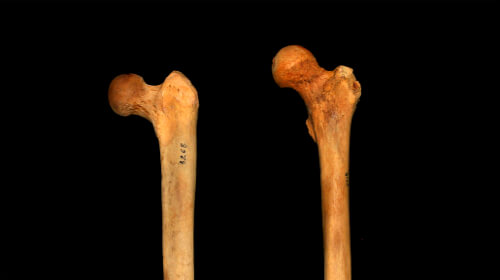
Furthermore, equipped and raw lifting both call upon extremely different methods when it comes to performing lifts and planning out workouts.
Powerlifting vs. Bodybuilding and Olympic Weightlifting
All three strength disciplines rely on moving around heavy iron in the weight room, but have very different goals and thus different approaches to reach those ends.
When it comes to weightlifting, the differences are stark. Instead of focusing on the big three, weightlifters are devoted to maximal power and strength in the power clean and jerk and snatch. These lifts require explosiveness and are trained in a very different fashion with extremely low repetitions and longer rest times.
What about strength athletes focused on aesthetics?
While bodybuilders are focused almost exclusively on gaining as much muscle as possible while shedding fat, powerlifters aren’t focused on aesthetics—they want huge lift numbers in the big three and a scoreboard that proves it.
A common misconception, however, is that all powerlifters are fat. This couldn’t be further from the truth when you look at the lower weight classes of 242 and below.
And if you want to point to the super heavyweights, consider this: bodybuilders compete and step on stage at 265 or more pounds? Ronnie Coleman and Dorian Yates are just about the only two and they are true genetic freaks of nature.
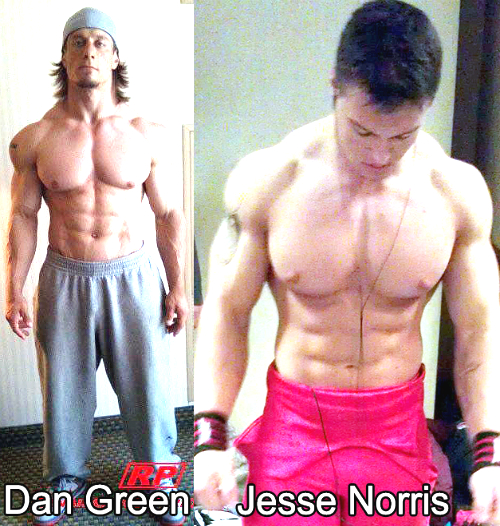
Do they look fat to you? Me neither. And before you scream about PEDs, Jesse is a tested athlete and claims to be natural.
How They’re Similar
Because both are strength sports, there’s no denying the fact that you’re going to run into some similarities.
- Both require peaking phases for optimal performance during competition, which may include bulking or cutting to a desired weight level or body fat percentage
- Both require optimal sleep, nutrition and recovery due to high levels of adaptive stress and training fatigue
- Both utilize many of the same lifts and exercises, but prioritize them much differently
- Both require a high level of mental resilience—they are both tough sports that weed out those who are incapable of sticking to a goal and seeing it through to the bitter end no matter the cost (okay, it’s not always that dramatic but once fatigue starts to accumulate it gets tough)
How They Differ
While some of the core tenants are alike, the execution of the two sports varies wildly. Along with that, priorities are obviously different depending on which faction an athlete subscribes to. Some things that matter to a bodybuilder just aren’t important to elite strength athletes, and vice versa.
- Bodybuilding is all about being as big as possible while carrying extremely low levels of fat while powerlifters are only concerned with making weight for their given class—beyond that it isn’t of concern
- They stick to higher repetition ranges and don’t touch heavy singles, doubles, and triples for the heavy movements for fear of injury
- They entire days to specific body parts instead of centering workouts around a main lift
Powerbuilding
Do the two collide somewhere in the middle? If they do, it’s powerbuilding.
Simply put, it is a mix of the two strength sports. It focuses on maximal strength, while appreciating the importance of muscle and its relation to maxing out potential and reaching elite levels.
Jonnie Candito is one lifter who has talked about it at length in the past, but the message and evidence is clear: in the case of natural athletes especially (those who don’t take performance-enhancing substances), building muscle and including hypertrophy is especially important.
As you become stronger, you will be able to lift more weight for more reps—helping to build muscle. In turn, that new muscle is adapted and stimulated for high strength with the use of lower repetition schemes. It is a positive cycle that is precisely what this method hinges on.
While hardcore groups like Westside Barbell scoff at the idea, many respectable and even elite powerlifters utilize powerbuilding in at least some form or fashion. Russell Orhii is one such lifter who has set impressive records in the 83kg class and is set to compete as a member of the 2018 USAPL Team, representing the U.S. in raw lifting on the world stage. He dives into specifics and gives a full run-down in a popular video on his channel.
Ben Pollack is another insane strength athlete who has set crazy records. He squatted four times his bodyweight recently to hit 805 to break his previous record of 800 pounds.
Recently he has been a big voice in pushing powerbuilding techniques and the use of higher repetitions alongside traditional heavy weights typically used.
More Articles
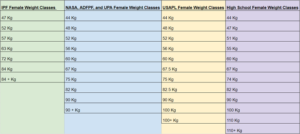
Powerlifting Weight Classes (Women) & Tips From 13 Best Powerlifting Women
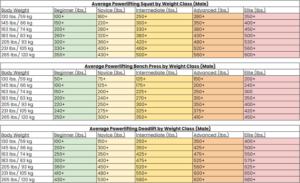
Powerlifting Weight Classes Average Lifts (Powerlifting Weight Class Trick)
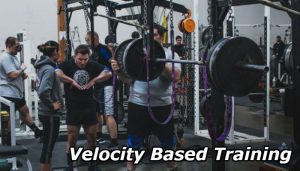
Velocity Based Training: Open Barbell vs. GymAware vs. FORM and More (Research)
Inzer Belt: Ultimate Guide (Lever vs. Forever, Sizing, Reviews, & More)
Powerlifting Singlets: Sizes, Reviews, Tips and More (Men & Women)
Best Deadlift Shoes for Optimal Technique and a Bigger, Stronger Lift
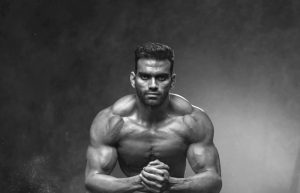
Powerlifting Diet and Meal Plan for Weight Loss and Muscle (EASY to Follow)
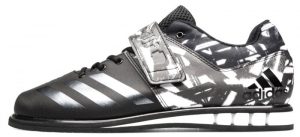
Adidas Powerlifting Shoes: 2 Options But Which Is Best?
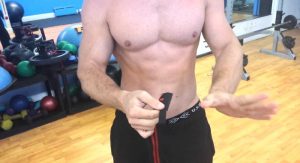
Powerlifting Wrist Wraps: How to Lift More with the Best Wraps Available
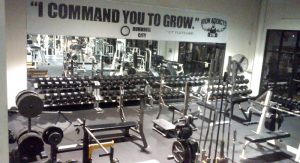
Powerlifting Gyms in Las Vegas: Full List
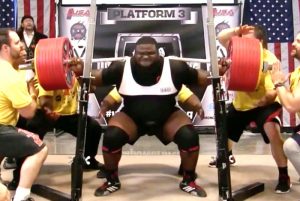
3 Reasons Powerlifting Knee Sleeves Should Already Be In Your Gym Bag
